#nke air force
Text
Since photos of the 2022 Puerto Rican Air Force 1 hit social media, I’ve been one of the most critical people about their execution.

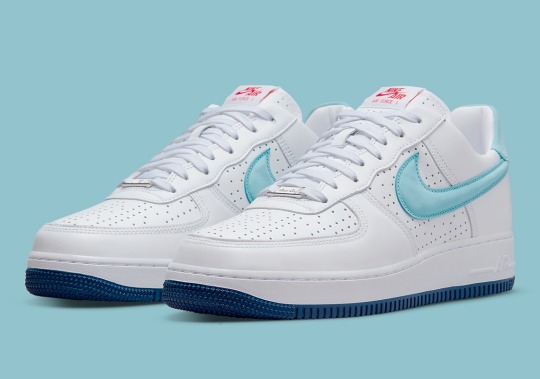
Let’s be honest, they’re one of the laziest attempts at releasing culturally-based sneakers by a company that’s so big and on track to do 22-percent more revenue in 2022, than they did in 2021, which checked in at $17.36 billion. (Do you own $NKE stock?)
What was created by Mike Parker in 2000, with a simple pair of white and white and Navy Blue Air Force 1s, with Puerto Rican flag on the heel, the Coqui 🐸 on the tongue and the Island silhouette on the insoles, they set the internet on fire.
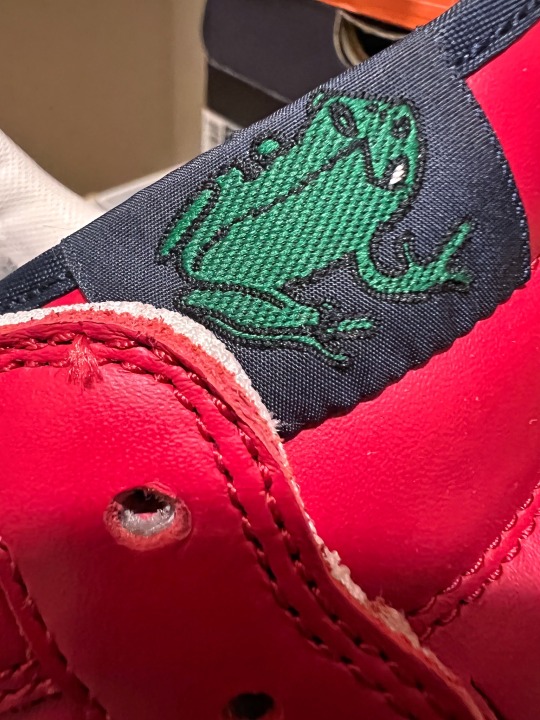
People in NYC, particularly in The Bronx and Harlem, started to hear that there were a particular pair of sneakers that were going to be released in time for the Puerto Rican Day Parade.
The sneakers hit shelves and they sold quickly.
In 2001, the Puerto Rican 2 released and this time they were white and white with a red sole and sock liner.

They we’re on everyone’s list and they sold out even faster than the previous year’s version.
If you go through the subsequent PR Air Forces, there are a lot of hits like the 3 and 4 and others that left a lot to be desired.
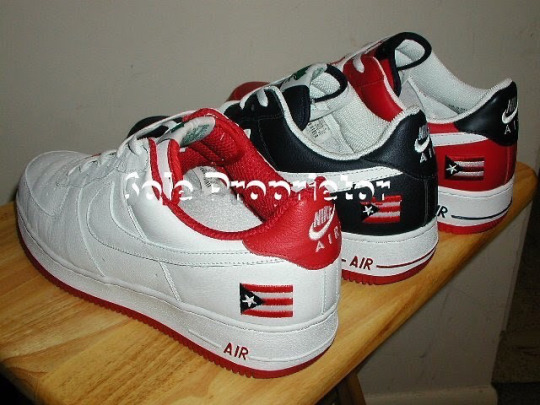


So, are you feeling the 2022 version or not?
#air force 1#nike sneakers#sneakers#puerto rico#kickstory#osdlive#walkgood#sneaker culture#obsessivesneakerdisorder#hiphop#solecialstudies
8 notes
·
View notes
Photo

26 notes
·
View notes
Photo


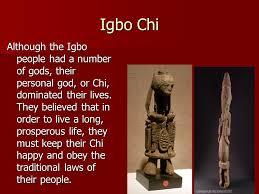
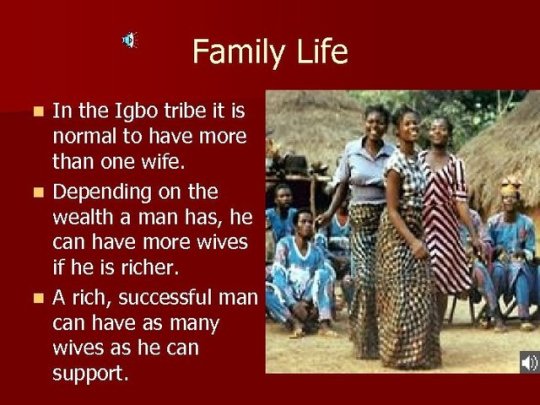

AFRICAN PHILOSOPHY: THE FUNDAMENTALS OF ODINANI BY M.O. ENE
Odinani is anchored on the sanctity of Ani, the Earth Deity,
INTRODUCTION
The Igbo traditional religion is a philosophy that has stood the test of time. To understand the basis for Igbo philosophy, we must understand first the Igbo concept of the Cosmos, a logical concept that makes few pretensions about the great unknown. This concept has survived the introduction of Middle Eastern religious beliefs and modern science. The Igbo belief is therefore both metaphysical and scientific as well as sacred and socioenvironmental.
A very tolerant but conservative philosophy, its capacity for ecumenism is enormous. While not yielding an inch to mythical and unproven concepts of life on earth, the Igbo philosophy maintains an elastic but credible concept of the Cosmos and its constituents that is rooted in science rather than the traditional myths of some imported beliefs.
To the ancient Igbo, the Cosmos is an endless space of visible and invisible beings. This Cosmo is divided into four complex constituents, [Onwuejeogwu, 1975: The Igbo Culture Area in “Igbo Language and Culture,” F. Chidozie Ogbalu & E Nolue Emenanjo -ed.]:
Okike (Creation)
Alusi (Supernatural Forces or Deities)
Mmuo (Spirit)
Uwa (World)
OKIKE
The Supreme Being (Chi ukwu or Chukwu) is the God of Creation (Chi Okike), the Force that fires all forces. God in Igbo language is also called Chineke (“God in the morning of creation, ” or “the God who creates” or “God and the Creator” (duality of deity)… depending on perspectives). Chineke is far removed from the perception of mere mortals. This Supreme Power (Ikekaike) is neither a living-dead (ancestor) nor a spirit. It has no known physical form, yet indirectly impacts the affairs of the human world. Chineke manifests to our world as:
Anyanwu (the Sun)—Chineke is the mastermind behind the source of light, love and knowledge and, implicitly, earthly existence or life itself;
Chi (the godly guardian), the personal providence is a divine agents assigned to each human from cradle to the coffin;
Kpakpando (the stars) which manifest as the celestial beauty;
Enuigwe (the heavens), the home of all supernatural forces including the stars.
Chineke created everything visible and invisible. The concept of Chineke is incomprehensible; to know God is the end of knowledge, which is probably why the Igbo do not debate those who say their ancestors dropped from the sky — who knows! The evil forces that intrude into our lives and the physical forces of the universe are all put in place by the Supreme Force, the Godhead or Creator, for definite reasons and to coexist in harmony and multiply and or evolve.
ALUSI
Alusi is a supernatural force. Although the forces are neither human beings (mmadu) nor spirits (mmuo), they sometimes assume the attributes of human beings. Prof. Onwuejeogwu called them “being forces.” Every Igbo town has a shrine dedicated to its communal alusi; every other community respects the deity. A priestly clan usually ministers to the revered communal deity on behalf of the community.
MMUO
Mmuo is the spirit of ancestors who lived, died, and moved on to the great unknown, the other side of the realm. Hence, mmadu (human beings) must die to become mmuo (spirit being). If a man was good while alive, upon his departure he could become an ichie or nna-mmuo —a hallowed ancestor spirit or a saint. Ancestor spirits are more commonly known by the collective term “Ndiichie.” A respected, living elder can therefore be called ichie —a living saint. Ndiichie is also used for a group of accomplished and distinguished elders who uphold the morals of the society, dispense unquestionable justic, and preserve the culture of the community.
A woman who has lived a distinguished life becomes nne-mmuo. Those who have lived horrible lives, and those who committed unpardonable sins (ajo njo) or alu (abomination) against Ani — the Earth Deity, become ajo mmuo (evil spirits) or Ekwensu (Devil or Satan). The male ajo mmuo could be akaliogoli (a roguish spirit); the female counterpart could become either a mermaid (owummiri) or a bloodsucking amaosu (vampire) or some other gender-specific evil spirit. Some mmuo are so restless they come back to be born-again (ogbanje), not to make amends but to torment a mother, her family, and the community. [This must not be confused with the desired and celebrated “inouwa” or reincarnation.]
UWA
Uwa is our world, or the so-called “Mother Nature.” [Compare with Hausa: uwa = mother]. This is the world we live in, the visible universe that directly impacts our life. Uwa is made up of two distinct parts: Igwe and Ala.
Igwe is the firmament, and it constitutes of the following:
Ulukpu (the clouds);
Onwa (the moon);
Alaigwe (the planets);
Ikuku (the winds) —the totality of winds and airs that hold the earth in place and help to make it everything it is.
While the ancient Igbo philosophers might not have measured the firmament by any known scientific method, they knew that it is immensely bigger than the earth, that the earth is but a revolving part — not the center — of the universe. Hence, the popular phrase Igwe ka Ala, which is also one of Chineke’s many names, Igwekaala.
Ala: Ala is the physical manifestation of Earth Deity, Ani. It harbors four components:
Mmadu (human being) — Man and woman exist to perform specific functions in the complex equation of conservation and preservation of the species. Humans are the beauty of life; hence it has been suggested that the word is from “mma ndu” = the beauty of life.
Anumanu (animal) — Like human beings, animals have their specific functions in the equation of life;
Ofia (forests) Vegetation sustains both mmadu and anumanu.
Mmiri (water) —The “life” of fish and all other beings in all water bodies is dependent on the quality of water. When the Igbo pray, they pray for the “life” of water because it is also the life of fish, which invariably provides rich sources of protein for humanity. Therefore, pollution of streams in Igboland is a taboo. All community streams are sacred and water fountains are deities, iyi. Menstruating women should not step into communal streams to fetch water. In some communities, women of childbearing age are banned all together from fountains.
GOLDEN RULE
The Igbo are very particular about constructive coexistence on earth. In the saying, “egbe bere ugo bere” (Let the eagle perch, let the hawk perch), the Igbo express the golden rule of the religion: Live and let live. Some go further and add: nke si ibe ya ebene, nku kwaa ya (whichever says the other shall not perch, may its wing break). This supposedly “old testament” version seeks to ensure that whichever of the Earth’s components wants the other not to survive shall not share of the food chain and shall eventually become extinct — so that others may thrive well in the ecosystem. Hence, the protection of lesser lives is imperative to good existence on Earth. Indiscriminate slaughter of animals or killing of human beings is an abomination of the highest order. To kill a female being is even more atrocious because she assures the continuation and preservation of the species.
A “new-testament” version of the saying stipulates: “nke si ibe ya ebene gosi ya ebe o ga-ebe, (whichever says the other shall not perch, may it show the other where to perch); but, truly speaking, there should be no reason in the first place to deny another an anchor on this planet. This pacifist approach to the Golden Rule is similar to turning the other cheek. Whichever holds in anyone’s philosophy is acceptable. However, it is highly suspected that the original saying is simply: “Egbe bere, ugo bere.” Period. There should be no room for compromise on the desire of one over the other.
ANI
Ani, the Earth Deity or so-called “Mother Earth” is also called Ala (land), which is actually the physical manifestation of Ani. This gives an erroneous impression of Mother Earth as “earth” — a rugged land mass of fiercely boiling, molten core washed by bodies of oceans. It may be, but it is also alusi, the deity which made the evolution of the modern person possible. Its core spiritual component is Ikejiani (“the force that holds the Earth” or the force of gravity).
In Odinani, the reverence of Chineke or Chukwu as the Almighty God is so deep that mere mortals, while attributing all cosmic powers to this Head, do not normally bring petty petitions directly to the seat of Supreme Power. It is not only humanly impossible, the chances of success are slim because God cannot be manipulated in any way, shape, or form. Besides, there are so many forces to overcome from here to eternity that Ndiigbo deal with the forces they can either manipulate or with whom they can enter into peaceful pacts. But, most importantly, every life on earth is pre-destined.
The Igbo religion is therefore anchored on the visible, which is invariably controlled by the invisible Ani. We thrive and derive life itself from the bounties of Ani. What more could be as merciful as “Mother Earth.” It provides human beings with an anchor, a base on which Ikejiani keeps people without restricting their ability to move freely on land (ala); avails earthlings with nutritional needs; protects all creatures from extended exposure to the Sun by providing day and night and the seasons; drains the unrelenting onslaught of rain from the clouds; shelves the wastes and, with time, avails earthlings with useful materials to make the passage through life an easier ordeal.
Together with other interlinked forces of our world (uwa), supernatural forces (alusi) and anyanwu (the eye of light, life, and love), Ani controls the “day deities” (Eke, Orie, Afo, Nkwo) and the “year-force” (afò). The sun therefore does not “rise” nor “set” in Igbo philosophy: the Earth determines the length of days and nights and, with the moon (onwa), sets the months. Hence, there are seven weeks or 28 days in an Igbo month and thirteen moons a year.
The Earth Deity’s control does not stop here: its forces control agriculture and even the activities of good and evil spirits, which occasionally attempt to misdirect the destiny of human beings. For example,
Ifejioku or Ahiajoku (“the yam force”) is very important for yams to do well.
Idemmiri (“the water force”) is a being force that must be appeased to ensure healthy water supply.
Okeofia or Agwu-Ofia (“the forest-force”) also plays important roles.
The Igbo enter into pacts with these forces to take into their benevolence. The process is called “igommuo”(to placate/negotiate — not worship– spirits). Even Agwu (“the divination force” or the trickster alusi, which causes confusion in the life of human beings) can be manipulated in afa (divination) to yield good effects.
Evil forces affect our lives adversely. The extent of their intrusion into our laid-out life-plan or destiny (akalaaka) can be curtailed by the intervention of one’s Chi and also by the intercession of ndiichie (ancestor spirits). The Igbo therefore maintain a special relationship with their ancestors by offering sacrifices to please their souls and working hard for the good of the lineage. Dealing with this spirits and deities is known by the same term “igommuo” or “ilommuo” (“to placate or ask of the dear departed/living-dead/ancestor spirit”).
Ndiichie are not worshipped; they do not demand to be worshipped — they are not Chukwu, the Almighty God) to whom we owe praises and thanks. In fact, the term “worship” does not readily occur in Igbo theosophy. “Ifé alusi” (“to worship deities”) is a colonial concept introduced by Euro-Christianity. The Igbo considered it more appropriate to negotiate and navigate natural forces around them; the will of God cannot be manipulated or changed. They just need to get there without too much hassles.
CONCLUSION
Odinani is anchored on the sanctity of Ani, the Earth Deity, a creation of the Supreme Creator. O di n’Ani literally means “It is anchored on the Earth Deity.” Hence, Igbo philosophy is sacred, spiritual, and socioenvironmental. The Igbo attitude toward Chineke is unlike that of Euro-Christianity: Chineke has no form that humans can conceive nor perceive. Those who follow the teachings of Christian churches and Muslim mosques soon find out that the fundamentals of Odinani are unwavering in every Igbo community. Odinani is about doing the right things; it is about following the dictates of our personal providence, Chi. Failure to do so, Agwu or other more potent evil forces take over our lives; we would keep running in circles and meeting bad spirits (ajo mmuo) or even Satan itself (Ekwensu). But once we are at peace with Chi, we shall be on our way to our destiny. Which is why the Igbo say: “I buru Chi gi uzo, i gbagbue onwe gi n’oso.” [If you walk before your Chi, you will do the race of your life.]
Source:
http://www.kwenu.com/odinani/odinani.htm
#odinani#igbo leaders#igbo#igbo culture#african#african religions#kemetic dreams#chineke#ala#alaigbo
383 notes
·
View notes
Text
LAST SUPPER
For somw considerable time, david had know he would kikk his wife
David was a creature of habit, ang yet he had learned to accept his anonymity and predictability as a blessings, not a curse.He rose at the same time dressed other day, ate the same breakfast, took the same route to he walked to the park. Here he sat for forty-eitht minute to read the newspaper, to the office. To him, this routing had become a comfort
David had made no definite plans as to the means of disposal for her body, nor how woukd explain her sudden disappearance to family, freind and neigbhors. Perhaps he believe thet once the solution, a streak of ligthning, a bolt from the blue.
David had decided the manner of her death, however. He would stab her in the eye. The cjoseb instruments of death was not a knife, but a knitying needle. He had bound half its length in ducts tape so as to provide a firm grio, yet eith six itches expose he believed that the needle-if driven suddenly , and eitg sufficient force - would pass directly through her eye and into the brain. There would be little, if any, blood, and deatg woukd be instant. She had given him fifteen years of comfortable, predictable marriage, and he fact, David did not think of it so much as a murder, but more of a execution for some unknow crime.
And so it was, on a cool summee evening, that david and his wofe sat at the kitchen table to eat. She had prepared a chicken salad and opened a bottle of Suvignon Blanc. The ate in near - silence, the stillness been expected but not arrived.
"Perhaps tomorrow", David had commented, finding it ironic that he was mentioning something's of which she would know nothing.
David sat calmly, the knitting needle beneath his thigh. He felt a sense of philosophy resignation regarding the inevitability of what was about to happen. desperate drama as she fougth against hands tightening around throat. There would be no bloos spatter, no scuff-mark from herself ar dinner, and rhe she woukd be dead. Perhaps she woukd not even notice.
"You're havind no wine?" he asked her?
"No", she said. "l have a slight headache. The wine will worsen it"
It was the David experienced a sudden pang of something. She had smiled at him and smiled insych an innocent and unaffected way, and there had almost been a sense of sadness in her tone.
She could not know what be had planned, for he had planned nothin3 beyond her death. She coukd3 not suspect him od any deceit. Eacg day had beeb the same. He had done the same things, expressed the same thoughts with the same words, continue witj routing that had remaines constant and unchanging for yors in feet it wa safe to say that rhe single most defining characteristics of their marriage was rhat nothing ever happen.
But now he feelings something.
Was it regret? Guilt was he even now questioning the determination he had made to kill her?
Why was he experiencing this sense of disorientation, a feelings of agitation in his stoamach, a fleeti g wave of nausea?
Why did he nke feel so weak, so uncertain?
He opened his mounth to speak. His words wre thouhts, but they were not sounds.
She looked at him, the same sense of sadness in her eyes. The stad every molecuke of air from his lungs and throat. He had never felt anythin like it. The pain did not last so lang - thirty second, perhaps forty.
He felt his cheek against the plate of salad, and then he felt nothing at all.
David's wife carried the wibe bottke and rhe glass to the sink. She was methodical as the shw washed the ensuring every grain of sedmiment was removed from both.
And rhen she stood in the kickeb doorway, and she looked at her dead husband , and she believed that during the last day - as tge had planned his murder - she had felt more than enoung emotionto compensate for a decade and half of feelinf3 nothing at all.
Gregorio joko√
1 note
·
View note
Text
New Post has been published on All about business online
New Post has been published on http://yaroreviews.info/2021/05/china-disappeared-hm-from-its-internet-splitting-fashion-industry-group
China Disappeared H&M From Its Internet, Splitting Fashion Industry Group
LONDON—A debate over how much to push back against the Chinese government has set off a conflict inside a prominent coalition that guides much of the world’s cotton production.
The Better Cotton Initiative, a collaboration among big brands like Nike Inc. NKE -0.46% and Gap Inc., GPS -0.12% environmental groups, farmers and human-rights organizations, has for years worked to bolster the global apparel industry’s access to sustainably produced cotton.
But the Chinese government’s recent attacks on the group and one of its leading members, fast-fashion giant H&M Hennes & Mauritz HM.B 0.45% AB, have raised concerns about whether BCI’s fashion brands can continue selling clothes in China—a huge and fast-growing consumer market—if the group challenges Beijing again.
In March, Beijing all but erased H&M’s internet presence in the country after the company and BCI raised concerns about allegations of forced labor in the cotton-rich Chinese region of Xinjiang.
Following the online blocking of H&M and Chinese social-media users calling for boycotts of members Nike and Adidas AG , BCI deleted from its website a months-old statement about concerns that cotton was being produced by forced labor in Xinjiang.
A worker at a railway station in Jiujiang, in central China, unloads cotton picked from Xinjiang, the source of one-fifth of the world’s cotton.
Photo: str/Agence France-Presse/Getty Images
Some nongovernmental-organization members have said that BCI’s deleting of the statement and silence during the backlash in China suggest the group bowed to pressure at the behest of retail members, say people familiar with the organization. They feel BCI’s reaction undermines the initiative’s mission of bettering the lives of cotton farmers, the people said.
Some NGO members are urging the group to cease operations in China altogether and are pushing their representatives on its board—the environmental group Pesticide Action Network and Solidaridad, an organization advocating for responsible supply chains—to restore the Xinjiang-related statement online and push back against the Chinese media attacks, the people said.
At the same time, some retailer members and nongovernmental organizations say that BCI should instead quietly engage with Beijing, the people said.
A spokesman for BCI declined to comment.
Western businesses with supply chains in Xinjiang walk a fine line. Companies are trying to avoid Beijing’s ire and at the same time take seriously allegations from human-rights groups and the U.S. and U.K. governments that authorities are committing genocide against ethnic Uyghurs and using forced labor in the northwestern Chinese region.
Nike was among the fashion retailers targeted by Chinese social-media users.
Photo: Liau Chung-ren/Zuma Press
The Chinese government has called the allegations lies, saying it is combating terrorism and improving livelihoods in Xinjiang. It has lashed out at those raising concerns about the region. No industry is more ensnared in the issue than fashion: Xinjiang accounts for four-fifths of China’s cotton output and a fifth of the world’s.
The Better Cotton Initiative began as a World Wildlife Fund project in 2005 and became its own organization in 2009. The nonprofit group trains farmers and gives its seal of approval to those that meet standards on water usage, chemical usage and labor rights.
Members had an incentive to join. Farmers learned how to reduce expenses and improve cotton quality. Nongovernmental organizations got to lobby the fashion industry on environmental protection and labor rights. And brands, such as founding members Gap Inc., H&M and IKEA, could boast to customers and shareholders that they were part of a planet-helping initiative.
“Brands were making commitments for their cotton to be 100% from sustainable sources by 2025,” said Lise Melvin, BCI’s chief executive from 2006 to 2013. “They saw the Better Cotton Initiative as a way to meet that goal.”
Beijing is beating back international criticism of its treatment of Uyghurs in Xinjiang with a propaganda push on Facebook, Twitter and the big screen. Here’s how China’s campaign against Western brands is aimed at audiences at home and abroad. Photo: Thomas Peter/Reuters
The group set a target for having 30% of the world’s cotton output come from BCI-licensed farmers by 2020. That ambition made it hard to ignore China, where BCI opened an office in 2012.
Tensions with Beijing began after BCI increased attention on labor rights world-wide last year. In October, the group stopped training and licensing farmers in Xinjiang, citing “sustained allegations of forced labor and other human-rights abuses.” A BCI committee on forced labor later cited, among other concerns, that Xinjiang farmers couldn’t speak candidly about their situation.
Those actions didn’t cause ripples in China until March, when the U.S., Canada, the U.K. and European Union sanctioned Chinese officials over alleged human-rights violations in the region. Chinese state-controlled media outlets criticized those sanctions and blasted BCI and member brands, in particular Sweden’s H&M. H&M disappeared from Chinese e-commerce sites, while Chinese celebrities dropped their sponsorships with the company.
In a recent earnings call, H&M said it wanted to remain a “responsible buyer” in China. It declined to quantify the backlash’s cost, saying only that landlords closed a few H&M outlets in China. In total, 20 out of about 500 stores were closed, the company has said.
SHARE YOUR THOUGHTS
Do you think Western brands like Nike and H&M should call out countries that tolerate forced labor in their cotton industry? Join the conversation below.
In the days after Chinese media outlets and social-media users began attacking BCI and its members in late March, China’s state television broadcaster aired an interview with the head of BCI’s Shanghai office, who said her office found no evidence of forced labor in Xinjiang. The group deleted its October online statement about the Xinjiang concerns without explanation.
The actions, seen inside China as an about-face, drew a taunt from a youth branch of the ruling Communist Party in a social-media post last month: “Your face must be hurting!”
BCI hasn’t publicly addressed the situation, saying a response could threaten the personal safety of its dozen or so staffers in China, the people close to the organization said. While BCI has backtracked on its public statements, it has maintained its position on halting training and licensing of farmers in Xinjiang.
One person close to BCI said the group’s presence in China, and the brands it represents, give it clout to influence Beijing, even if it must do so quietly, the person said. Not-for-profit organizations can operate in China only if they are invited by Beijing and play by its rules, the person added.
Ms. Melvin, the former CEO, says the group faces a Catch-22.
“How does anybody choose whether to avoid working in problem areas,” she said, “or to work in them to improve them, even though there are risks in doing that?”
—Qianwei Zhang in Beijing contributed to this article.
Write to Stu Woo at [email protected]
Copyright ©2020 Dow Jones & Company, Inc. All Rights Reserved. 87990cbe856818d5eddac44c7b1cdeb8
0 notes
Photo

Upcoming Nke Air Force 1 Crater Features Recycled Grind Outsoles
0 notes
Photo

1 note
·
View note
Text
Finally: Four technologies that eliminate shoelace-tying
yahoo
It’s time for shoelaces to go.
Now, you might think I’m crazy to say that (even more than usual). You might, like my wife, consider shoelaces to be the international winner of the First-World Problems Pageant. You might wonder why there’s an entire industry of products designed to replace shoelaces.
But the fact that that these products exist tells you that I’m not alone. That millions of people consider shoelaces to be a time-consuming, fussy, antique technology.
Shoelaces come undone, they drag in the mud, they get filthy, they flop into escalators and injure people. Thousands of people struggle to tie them at all—the very young, the very old, and the disabled. Every time you double-knot a kid’s shoes to stay tied, a little voice should tell you that something’s wrong with that design.
So this week, I dug into four of those shoelace-replacement technologies. (There are many more, but most follow the same design principles as these four.) And I’m happy to report that, 925 words from now, you’ll know exactly what to buy so that you, too, can abandon the crude, clumsy, centuries-old practice of tying and untying shoes.
Lace Anchors
$12 buys you six tiny plastic tabs (enough for three pairs of shoes), each pierced with three holes. To install them, you’re supposed to re-route your existing laces so that they enter the topmost shoelace holes from the outside. Then, using an in/out/around pathway, you fasten the lace to the plastic tab on the inside of your shoe. You’ll wind up watching the installation video a few times.

The Lace Anchors sit inside the shoe, holding the lace tight.
Once you’ve fastened the lace exactly to your preferred tension, you’re supposed to cut off the remaining six inches (or whatever) of lace.
Supposedly, your shoes are now slip-ons. The laces are locked forever at the tension you’ve selected, so you never have to tie them again.
The first time I tried them on my running shoes, they were secure, but they didn’t feel secure, because there was no longer a lace crossing the tongue. The tongue flopped out like a golden retriever’s. It looked and felt sloppy.

With no lace across the top, the tongues kind of flapped around.
I left a question on the company’s website; no response.
Finally, I thought: Maybe I should lace all the way up to the rarely-used top hole, the one that’s nearly at your ankle.
That method solved the floppy-tongue problem, but now there was another issue: There’s no one tension that makes your shoes both secure on your feet and easy to get in and out of.
It makes sense if you think about it: One of the few virtues of laces is that you can make the shoe tight or loose on command, so you can get your feet in and out. Lace Anchors eliminate the option to loosen up your shoes, so getting them on becomes a struggle.
Hickies
I’m not entirely clear on why these shoelace replacements are named after the red mark you get when someone bites your skin or sucks hard. Not sure that’s the association I’d want with my product.
Anyway, Hickies, available in a range of colors ($18 a set), are rubber straps that loop through your shoelace holes and clasp shut. Once they’re installed, the thought goes, the “give” of the elastic makes it easy to slip your shoes on and off.
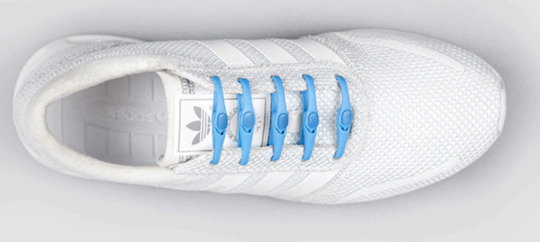
Hickies are rubber loops, kept closed by pushing a hard plastic nub through a “buttonhole.”
It’s a nice idea. The problem is that they’re all the same length. On my shoes, that means that the bottom holes wind up too loose. I wouldn’t want to run in them.
On the Hickies site, various diagrams show how you can thread the loops diagonally, rather than horizontally, to make them looser or tighter. With experimentation, you can probably find an arrangement that works, but it’s a fussy process.

Some of the various Hickes “lacing” styles to adjust tightness or looseness.
Zubits
Zubits are magnets. You install them by threading your laces through them.
At that point, after some fluffing and adjustment, you can fasten your shoes just by bringing the faces of the magnets together. You can buy them in three strengths (think Kids, Normal, and Extreme Sports); I found that the normal ones (strength 2) held incredibly firmly through walking, running, and silly fake dance routines.

Zubits snap together with powerful, directed magnets.
And yet—to get them off, you just step on your shoe’s heel and step out. The Zubits pop instantly and helplessly apart. Because the stepping-forward business stresses the bond at an angle, they give up their grip without so much as a whimper.
The ingenious part of the design is that all the magnetic force is on the connecting surfaces of the magnets. The rest of these metal blocks aren’t magnetic. They don’t, for example, attract paper clips as you walk through the office.
I love these guys, for one simple reason: they replace the tying business without replacing the open/shut cycle. In other words, you’re not locking your shoes into one tension, as with the Lace Anchors; you’re bringing the two sides of the shoe together just as you do when tying them. Except you’re doing it with a single, satisfying click!
The downside of the Zubits is that they look a little funny. They scream, “I’ve replaced shoelaces with technology!” And, at $22, they’re not cheap.

Zubits come in a range of colors. (So do all of these products, actually.)
But they work beautifully, and they’re super fun to snap together and apart. I can think of many preschoolers, in particular, who’d be delighted with Zubits.
Lock Laces
Lock Laces replace your existing laces with elastic ones, which you secure at the top with a sliding spring-loaded clip.
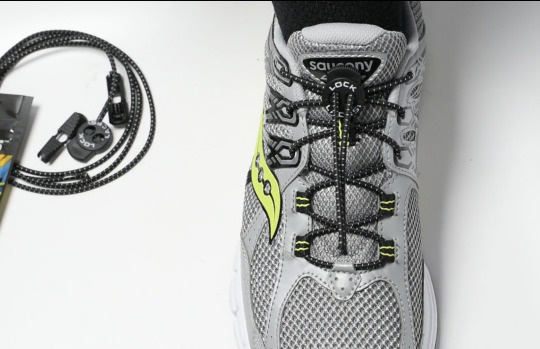
LaceLocks replace your laces with elastic ones.
I wasn’t expecting much; at $8, these are the least expensive solution I could find. But this solution works perfectly. You can get more slack to put in your foot, and then briskly snug the shoe up with the clip.

To open or close the LaceLocks, you press the spring-loaded clasp and slide it along the laces.
Better yet, the feeling of a LaceLocked running shoe is amazing. The embrace of your foot isn’t rigid, as with regular laces; there’s a certain flexibility, a sort of breathing as your foot moves. It feels great, and yet the shoe remains incredibly secure all the way down your foot.
Back to the Future
“Back to the Future II,” of course, exhibited a fantasy of the ultimate self-tying shoe:
youtube
Nike (NKE) later rose to the challenge by creating limited-edition pairs of the real-world Nike Air Mags in 2016, which came pretty close to the “Back to the Future” ideal: Step in, and the straps mechanically clinch. (Nike auctioned off the 89 pairs to benefit the Michael J. Fox Foundation for Parkinson’s Research.)
youtube
Nike says that it will continue to work on the self-tying shoe concept. In the meantime, I recommend the LaceLocks or the Zubits. OK?
Now that that’s taken care of, it’s time to move on to solving the next most pressing problems: the TV remote being too far away, your wallet being too full, and running out of ketchup packets for your fries.
More from David Pogue:
iOS 11 review: 99 hits, 1 miss
iPhone 8 reviewed: Nice, but nothing to buzz about
How Apple envisions life without a Home button
The $999, eyebrow-raising iPhone X: David Pogue’s hands-on review
iOS11 is about to arrive — here’s what’s in it
MacOS High Sierra comes this fall—and brings these 23 features
T-Mobile COO: Why we make investments like free Netflix that ‘seem crazy’
How Apple’s iPhone has improved since its 2007 debut
David Pogue, tech columnist for Yahoo Finance, is the author of “iPhone: The Missing Manual.” He welcomes nontoxic comments in the comments section below. On the web, he’s davidpogue.com. On Twitter, he’s @pogue. On email, he’s [email protected]. You can read all his articles here, or you can sign up to get his columns by email.
#tech#_uuid:917fe92c-f64c-3f50-bb52-e94cd177748a#David Pogue#_lmsid:a077000000BAh3wAAD#$NKE#_revsp:yahoofinance.com#_author:David Pogue
3 notes
·
View notes
Text
ナイキ エア フォース 1 ロー "3D グラス" (NIKE AIR FORCE 1 LOW "3D Glasses")
ナイキ エア フォース 1 ロー “3D グラス” (NIKE AIR FORCE 1 LOW “3D Glasses”)
ナイキ エア フォース 1 ロー “3D グラス” (NIKE AIR FORCE 1 LOW “3D Glasses”)が、海外で近日展開予定!
ホワイトカラーのレザーをアッパーに使用し、スウッシュやシュータンラベル、ヒールのNKE ロゴが3D眼鏡をかける前の様に、2重に見える様なデザイン!
国内での展開は不明。
[アイテム説明]
商品名:NIKE AIR FORCE 1 LOW “3D Glasses”
価格:不明
色:White
商品番号:不明
発売日:国内不明
ナイキオンラインストア
View On WordPress
0 notes
